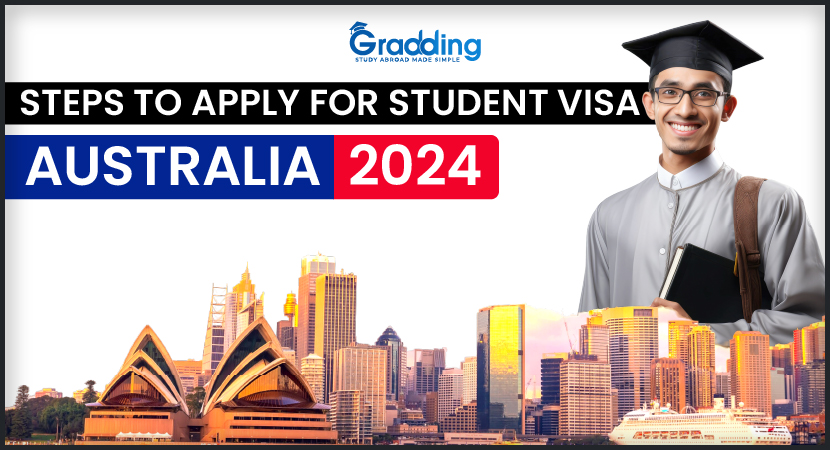
Studying abroad is an exciting opportunity to pursue higher education and broaden your horizons. If you're considering applying to universities in the US, UK, Canada, or Australia, understanding the basics of the student visa application process is crucial. In this article, we will delve into the various student visa classifications and provide an overview of the application procedures for each country.
Before embarking on your journey to study abroad, it's important to familiarize yourself with the student visa classifications based on the duration of your program or course. Each country has its own set of classifications, which determine the appropriate visa category for your specific academic pursuit.
About Canada Student Visa
For those aspiring to study in Canada, obtaining a Canada student visa is essential. Here are the key steps involved in the process:
Getting the Canada Study Visa:
To study in Canada, you need to apply for a study permit, which serves as a student visa. It is usually required for programs longer than 6 months. In addition to acceptance from a Canadian educational institution, you may also need to provide proof of financial resources, health insurance, and a clean criminal record.
USA Student Visa
The United States offers three primary types of United States visas:
- The F-1 visa is the most common type for academic students pursuing a full-time degree program at an accredited US educational institution. It allows students to stay in the US for the duration of their program and provides the opportunity for practical training.
- The M-1 visa is designed for students enrolling in vocational or non-academic programs, such as technical training or trade schools. It permits students to engage in practical training related to their field of study.
-
J-1 Visa (Exchange Visitor Visa) - The J-1 visa is intended for students participating in approved exchange programs, including study abroad programs, cultural exchanges, and research fellowships. It promotes cultural exchange and offers various categories, such as student, scholar, and intern.
UK Student Visa
The United Kingdom provides several options for students seeking to study in the UK:
- Short-term Study Visa: This visa is suitable for students pursuing short-term courses, such as English language programs or short courses. It allows students to stay in the UK for up to 6 or 11 months, depending on the type of course.
- Student Visa: The Student visa is for individuals aged 16 and above who wish to study a degree-level or above course in the UK. It replaces the previous Tier 4 (General) student visa and provides more streamlined options for international students.
-
Child Student Visa: Designed for children aged 4 to 17 who wish to study at an independent school in the UK, the Child Student visa enables young learners to pursue their education in a supportive environment.
Australia Student Visa
Australia offers various visa options for international students, depending on the duration and type of course they plan to pursue. Some of the common visa subclasses include:
-
Temporary Skill Shortage (subclass 482) Visa: This visa category allows international students to work in Australia temporarily while gaining practical experience related to their field of study. It requires sponsorship from an approved employer.
- COVID-19 Pandemic (subclass 408) Visa: Introduced in response to the global pandemic, this visa provides temporary entry to students who were unable to complete their studies due to COVID-19 disruptions. It offers an opportunity to extend their stay and complete their education.
Applying for a student visa is a crucial step in realizing your dream of studying abroad. Understanding the different visa classifications and requirements for the US, UK, Canada, and Australia is essential for a successful application. Make sure to research and prepare well in advance to ensure a smooth transition to your dream school abroad.
;More Travel News
-
 11-Oct-2024Umrah on budget: Tips to Save Money without Compromising the Experience
11-Oct-2024Umrah on budget: Tips to Save Money without Compromising the Experience -
 03-Mar-2025Strategy of Religious Tolerance Building a Framework for Peaceful Coexistence
03-Mar-2025Strategy of Religious Tolerance Building a Framework for Peaceful Coexistence -
 03-Oct-2020Pakistan Reopens Kartarpur Corridor As COVID-19 Situation Improves
03-Oct-2020Pakistan Reopens Kartarpur Corridor As COVID-19 Situation Improves -
 27-Jun-2020Qatar is Offering Free Visa for Pakistan, How to Get Qatar Visa from Pakistan
27-Jun-2020Qatar is Offering Free Visa for Pakistan, How to Get Qatar Visa from Pakistan -
 12-Feb-2025Government Hajj Scheme 2025: Final Installment of Remaining Hajj Dues (6th Feb to 14th Feb, 2025)
12-Feb-2025Government Hajj Scheme 2025: Final Installment of Remaining Hajj Dues (6th Feb to 14th Feb, 2025) -
 29-Jan-2022Ways to Obtain Turkish Citizenship from Pakistan
29-Jan-2022Ways to Obtain Turkish Citizenship from Pakistan -
 26-Feb-2023Special 25% Hajj Quota for Pilgrims launched for those depositing Hajj Fee in dollars
26-Feb-2023Special 25% Hajj Quota for Pilgrims launched for those depositing Hajj Fee in dollars -
.jpg) 20-Nov-202415 Banks Approved Hajj Application for the Year 2025
20-Nov-202415 Banks Approved Hajj Application for the Year 2025
